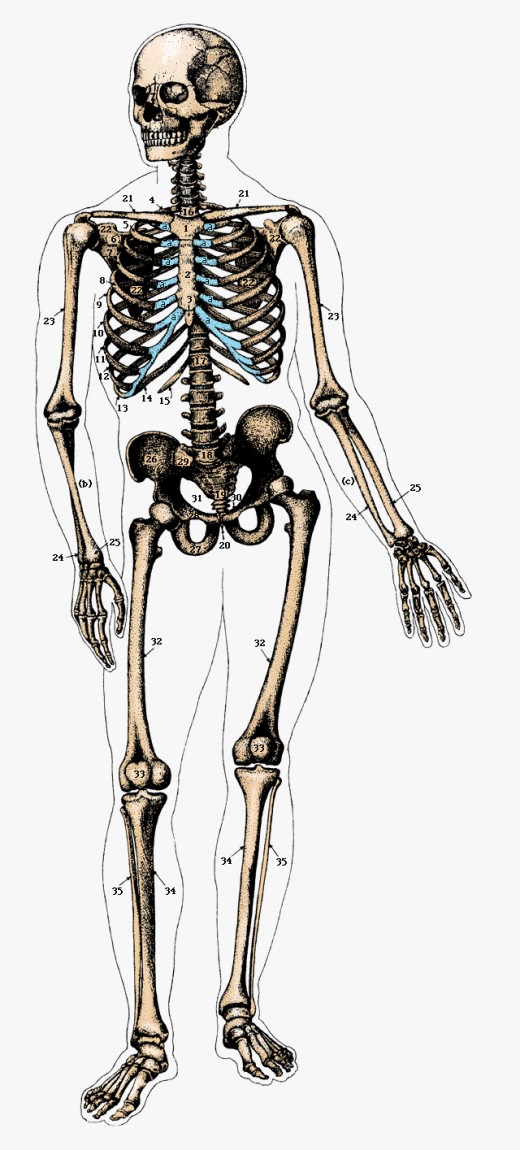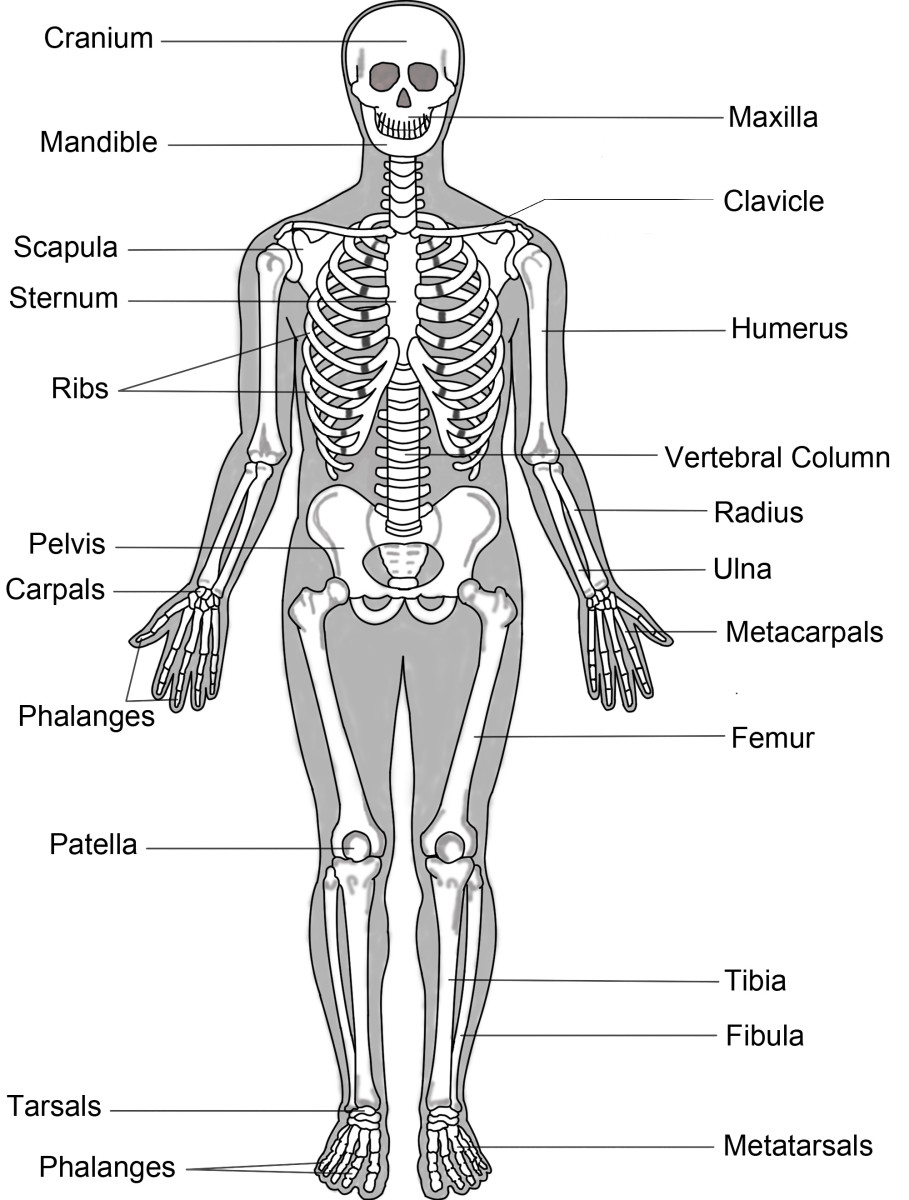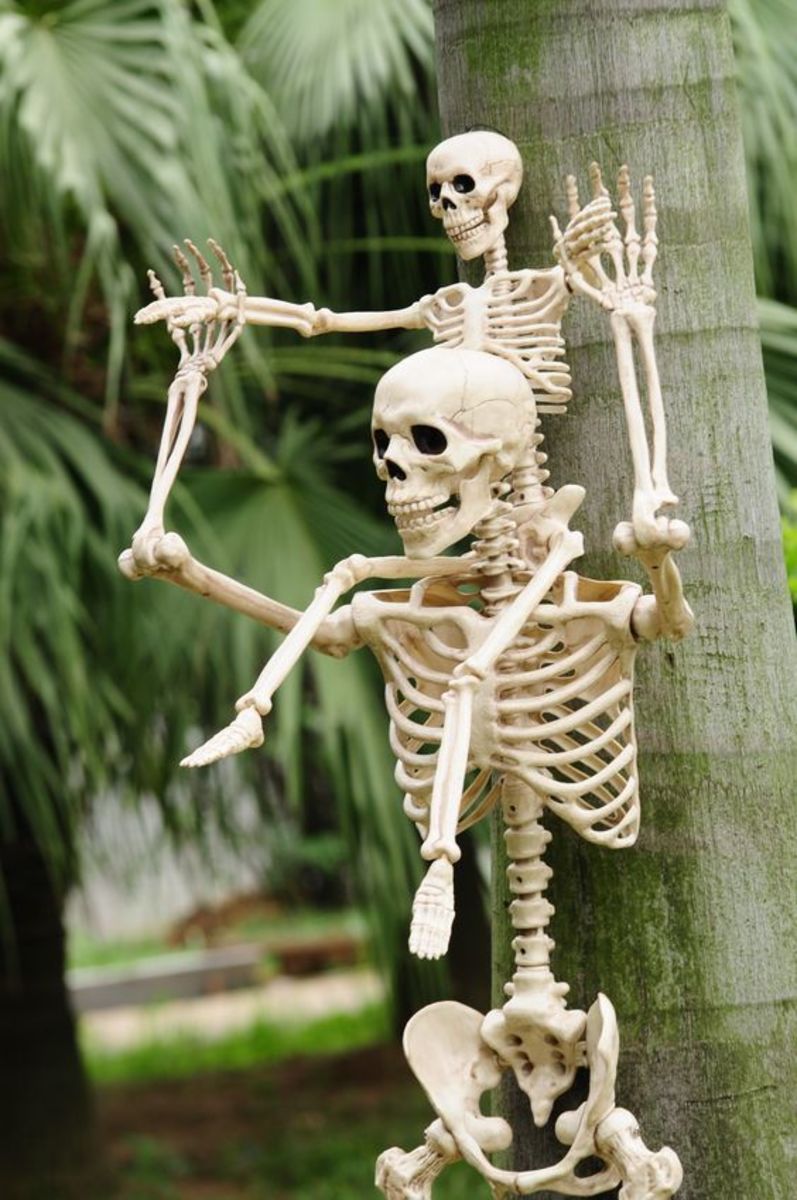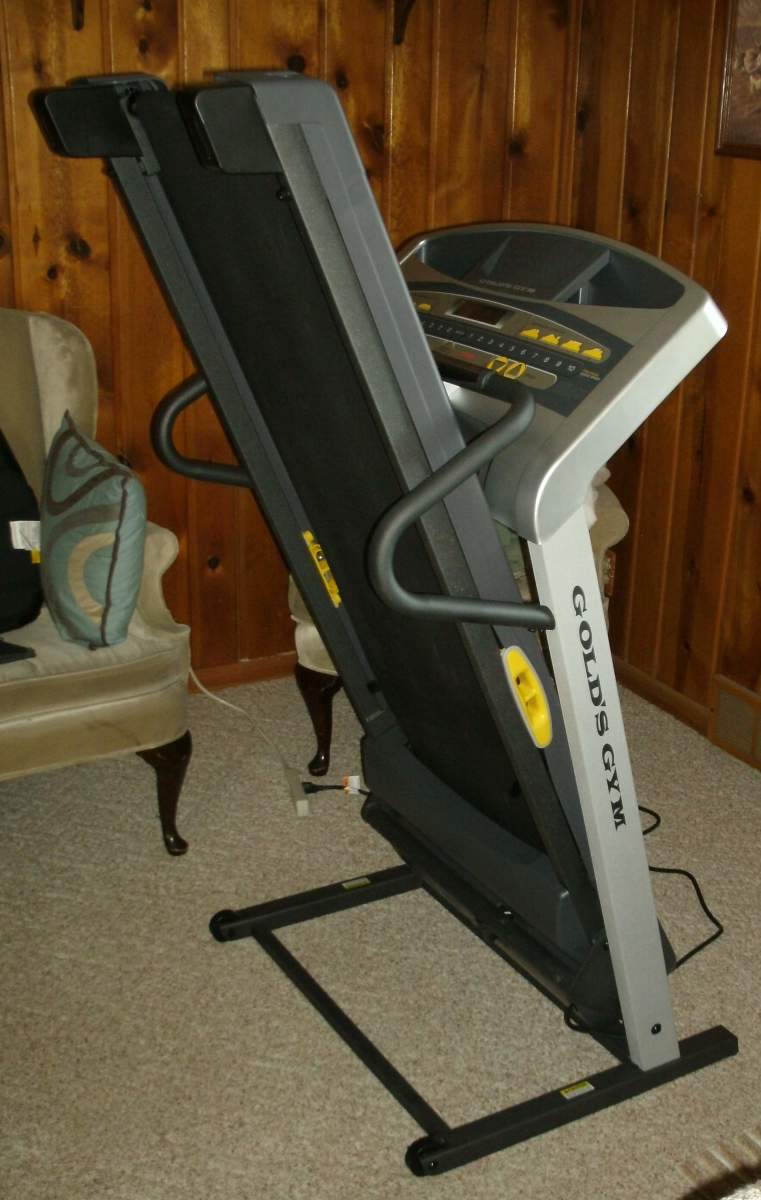The Human Skeleton

Functions of The Human Skeleton
Support
The human skeleton provides us with a means of support, if we didn’t have a skeletal structure for support of the body we wouldn’t be able to stand up or move about and perform actions. The skeleton is the frame for which all other body parts are held together by and provide the necessary support.
Protection
The skeleton provides us with protection for our major organs and prevents organ damage. For example the rib cage houses the lungs and heart and protects them from damage and provides support, the bones around major organs are designed to house and protect. The reason for this is any damage to an organ can be fatal.
Movement
The skeleton provides us with a structure to which muscles are connected to via ligaments and tendons, the design of the skeleton allows us to move about and provides a means of movement with ease, The skeleton is what allows the muscles in the body to move in various ways by the connecting part of the muscle pulling on the bone to contract the muscle and allow for movement.
Mineral Storage
The skeleton stores minerals for the body, the minerals that it stores include Calcium, Potassium, Manganese, Magnesium, Silica, Iron, Zinc, Selenium, Boron Sulphur and Chromium.
Blood Cell Production (Red)
The skeleton produces red blood cells for the body. One quarter of the cells in the human body are red blood cells. Red blood cells are vital because they allow nutrients to be transported in the blood stream, so the skeleton plays a major role in the nutritional side of survival that we need to survive.
Long Bones
These are the bones in the body that are longer than they are wider, the end of the bones are covered with hyaline cartilage which reduces friction within the joints and acts as a shock absorber to protect the bone ends. The other layer of the bone has a layer of connective tissue called the periosteum, the outer part of the bone is hard and dense for protection and has a layer inside that consists of cancellous bone, which is where red bone marrow is located. Examples of long bones are Femur, Tibia and Fibula.
Short Bones
These are the bones in the body that are considered as long as the are wide, they are designed for strength in the body as thy compact together to give the extra support that they body requires. Examples of a short bone are Patella, Carpals and Tarsal’s.
Flat Bones
These are the bones in the body that muscles attach to or provide protection. They are made up of two thin layers of compact bone which has cancellous bone in between the two layers, which is where the red bone marrow is located. Most of adults red blood cells are formed in the bodies flat bones. Examples of flat bones are Cranium, Ilium, Rib Cage and Sternum.
Sesamoid Bones
These are the bones in the body that are embedded with a tendon, These bones are located where a tendon passes over and connects a joint together. The main purpose of the bone is to protect the tendons and provide a better range of movement putting less strain on the tendons thus allowing for a more fluent movement. Examples of Sesamoid bones are the hand, foot and knee.
Irregular Bones
These are the bones in the body that cannot be grouped into the category of Long bones, Short bones, Flat bones and Sesamoid bones due to their “irregular” shape. They serve multiple purposesin the body. They protect nervous tissue e.g. the spinal cord and they provide anchor points for skeletal muscle attatchment. They are made up of cancellous tissue and a thin layer of compact bone bonded together. Examples of Irregular bones are the Coccyx, Vertebrae and Sacrum.
Axial Skeleton
The axial skeleton is the central axis of the human body, it consists of the Cranium, Vertebral column, Rib cage and the Sternum. It’s main job is support and protect the internal organs. There are a total of 80 bones in the axial skeleton, Cranium (29), Spinal column (26) and Thorax (25)
Appendicular skeleton
The appendicular skeleton makes up the other 126 bones in the human body, the appendicular skeleton holds the upper and lower limbs. The main function is movement and support of the body. The bones that make up the appendicular skeleton are the ones that muscles connect to, which allows movement to occur. Pectoral girdles (4), Are & Forearm (6), Hands (58), Pelvis (2), Thigh & leg (8) and Feet (56).






